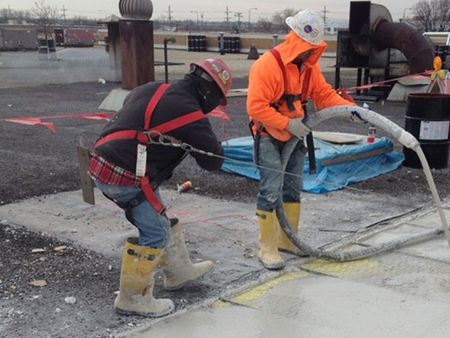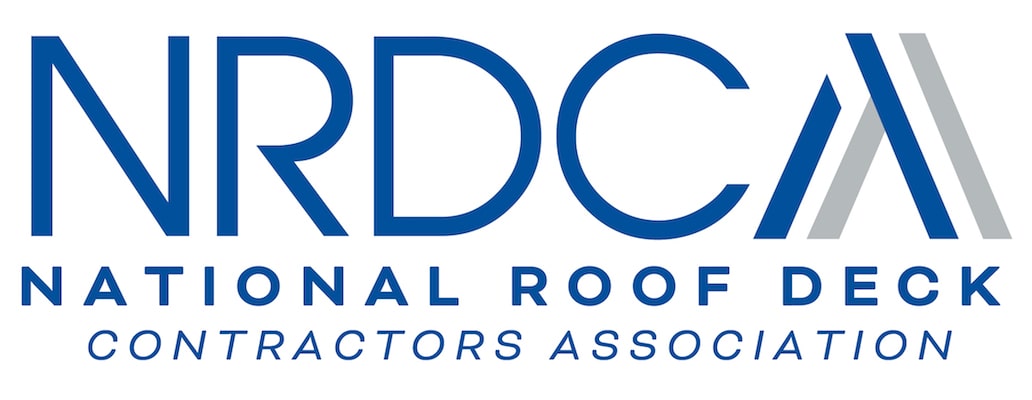Gypsum Concrete
Gypsum Concrete Roof Deck System
Gypsum concrete roof deck systems have been installed since the early 1950’s in all types of commercial markets. These include office complexes, schools, public buildings, shopping malls and warehouses located throughout the United States. Many of these installations continue to perform and provide support to roofing materials that have been added over time. Repair and reroofing of these constructions continues everyday with immense cost savings to the owner.
A typical installation would include a sub‐purlin system to hold the form board in place. Galvanized wire mesh is installed to provide tensile strength to the downward load characteristics of the system. The wire mesh is laid over top of the form board and sub‐purlins. Gypsum concrete is placed at a minimum of 2 inches above the formboard either fiberglas formboard or sheetrock formboard.
Various sub‐purlins were used in the system. They include bulb tees and truss tees. Both provide the spanning characteristics required for the design.
Gypsum Concrete systems were used in designs requiring up to two hour fire resistance ratings, wind uplift of UL Class 90, and where strong downward load resistance is desired. Truss tees were used to increase horizontal shear forces for building construction. The truss tees allowed the gypsum concrete to flow through the structural support thus increase shear resistance.
Roofing was added by nailing a base sheet to the gypsum deck and then bonding roofing materials to the base sheet.
Today many of these systems are being repaired and reused with new roofing materials. Even new gypsum decks are being installed in many parts of the country. To learn more about repairing gypsum systems see the standards section of this web site.

